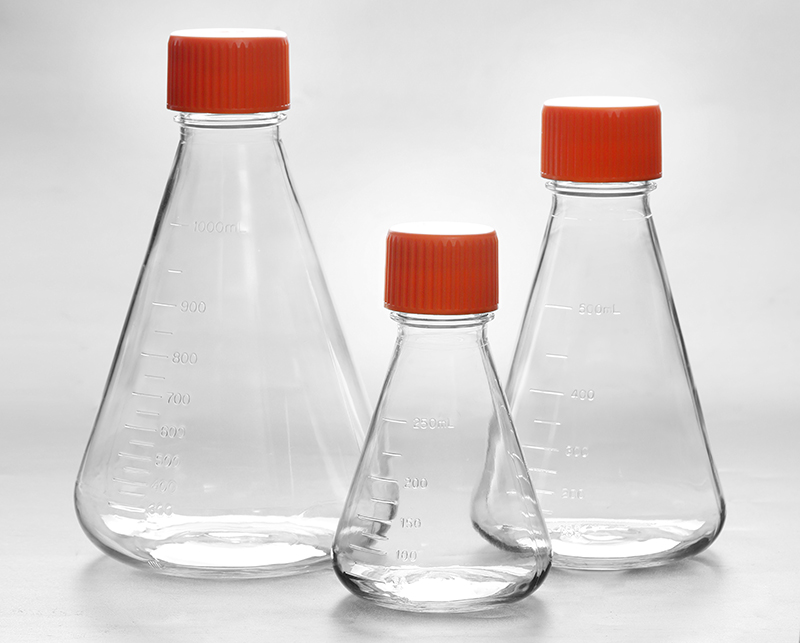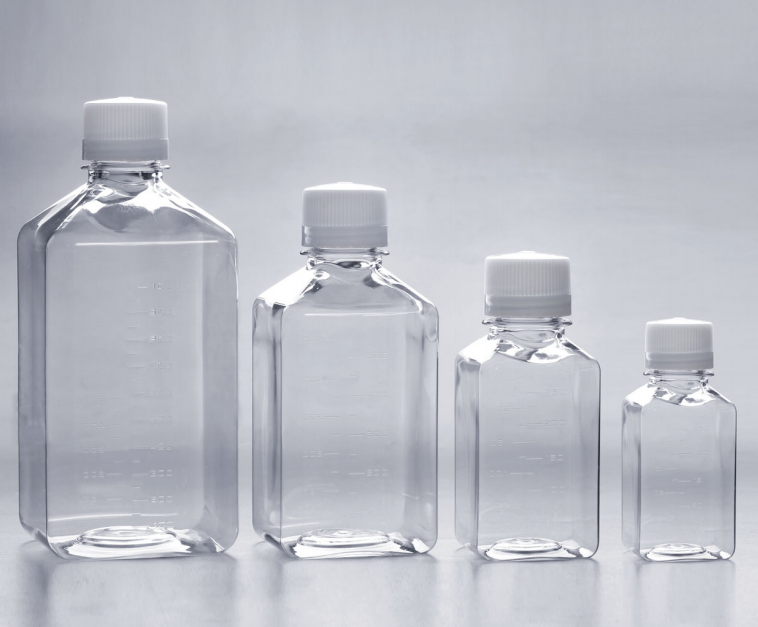Transformed Lymphoma Is Associated with a Favorable Response to CAR-T-Cell Treatment in DLBCL Patients
转化淋巴瘤与 DLBCL 患者对 CAR-T 细胞治疗的良好反应有关
The clinical features predicting favorable outcomes after CAR-T-cell treatment are a matter of ongoing debate. This study aimed to evaluate the potential importance of lymphoma subtypes regarding prognostic significance, mainly to compare transformed versus de novo DLBCL. We found that patients with transformed/secondary lymphoma have a decisively more favorable course after CAR-T-cell therapy than patients with de novo lymphoma.
预测 CAR-T 细胞治疗后有利结果的临床特征是一个持续争论的问题。本研究旨在评估淋巴瘤亚型对预后意义的潜在重要性,主要是比较转化与新生 DLBCL。我们发现转化/继发性淋巴瘤患者在接受 CAR-T 细胞治疗后的病程明显优于新发淋巴瘤患者。

Currently, chimeric antigen receptor T-cell therapy (CAR-T) is in the process of being introduced in an increasing number of centers for patients with refractory or relapsed aggressive B-cell lymphoid malignancies. So far, approved CAR-T-cell products for such patients rely on autologous genetically engineered T-lymphocytes, which express a chimeric antigen receptor (CAR) against the pan-B-cell CD19 antigen [1,2,3,4,5,6,7]. The basic anatomy of a CAR structure consists of an antigen-recognition domain, usually a single-chain variable fragment derived from a monoclonal antibody targeting the selected antigen (i.e., CD19); a hinge (usually derived from CD8 or Ig4 molecules) that links the recognition site to the transmembrane domain, which bridges the membrane; and finally, the intracellular domain that typically contains the CD3z chain critical for T-cell receptor signaling [8]. T-cell engineering started in 1990 with the development of the first generation of CAR-T cells in 1993; however, their clinical effectiveness was reduced due to their short persistence. After the introduction of a co-stimulatory domain in 1998, second-generation CARs were introduced in 2003. They were built to target CD19, and their discovery led to the first success in the treatment of aggressive lymphatic malignancies in 2011. The CD19 antigen is a transmembrane glycoprotein involved in regulating B-lymphocyte activation through humoral signaling [8]. CD19 is an ideal target that is ubiquitously expressed in B-lymphocytes, and its expression is maintained during lymphoid B-cell maturation and, importantly, neoplastic transformation [9].
Based on the JULIET trial [2,6,10,11], tisagenlecleucel (tisa-cel) was approved by the European Medicines Agency (EMA) in 2018 for refractory/relapsed (r/r) diffuse large B-cell lymphoma (DLBCL) after at least two previous treatment lines as well as for r/r B-cell acute lymphoblastic leukemia (B-ALL) in children and young adults up to 25 years of age with failure or relapse after two previous therapies or following allogeneic hematopoietic stem-cell transplantation (HSCT). Tisa-cel is a second-generation CAR-T utilizing 4-1BB as a co-stimulatory domain, which was developed by the investigators of the University of Pennsylvania in collaboration with Novartis [2,6]. Axicabtagene ciloleucel (axi-cel) is a second CAR-T-cell product, which the EMA authorized in 2018 for r/r DLBCL and primary mediastinal large B-cell lymphoma (PMBCL) after at least two lines of therapy [3]. It is a second-generation CAR-T utilizing a CD28 co-stimulatory domain. It was initially developed by the investigators of the National Cancer Institute (NCI). Currently, the construct is being developed by Kite Pharma, Gilead Sciences, and Daiichi Sankyo [3]. Lisocabtagene maraleucel (liso-cel) is currently available for relapsed/refractory DLBCL, PMBCL, follicular lymphoma Grade 3B, and mantle cell lymphoma (MCL) and is in the process of obtaining market authorization [4].
Despite the rapidly increasing number of clinical reports, uncertainty remains regarding the factors that impact clinical outcomes after CAR-T-cell treatment [4,5,6,12,13,14,15]. In particular, it remains unclear whether distinct lymphoma subtypes may differ in their response to CAR-T-cell treatment [1,6,7,16,17,18]. For example, a recent report suggested that patients with a history of follicular lymphoma had a better progression-free course than patients with DLBCL [16]. In addition, the TRANSCEND study reported similar findings [4]. Consequently, we investigated clinical and laboratory parameters in a cohort of subsequent patients with lymphoid malignancies for their prognostic significance, focusing on elucidating the impact of transformed (or secondary) versus de novo (or primary) DLBCL histology.

目前,嵌合抗原受体 T 细胞疗法 (CAR-T) 正在越来越多的中心引入,用于治疗难治性或复发性侵袭性 B 细胞淋巴恶性肿瘤患者。迄今为止,已批准用于此类患者的 CAR-T 细胞产品依赖于自体基因工程 T 淋巴细胞,这些 T 淋巴细胞表达针对泛 B 细胞 CD19 抗原的嵌合抗原受体 (CAR) [ 1 , 2 , 3 , 4 , 5 , 6 , 7]。CAR 结构的基本解剖结构包括一个抗原识别结构域,通常是一个单链可变片段,来源于针对选定抗原(即 CD19)的单克隆抗体;一个铰链(通常来自 CD8 或 Ig4 分子),将识别位点连接到跨膜结构域,跨膜结构域桥接膜;最后,通常包含对 T 细胞受体信号传导至关重要的 CD3z 链的细胞内结构域 [ 8]。T细胞工程始于1990年,1993年开发出第一代CAR-T细胞;然而,由于它们的持续时间短,它们的临床有效性降低了。1998 年引入共刺激结构域后,2003 年引入了第二代 CAR。它们是针对 CD19 构建的,它们的发现导致 2011 年在治疗侵袭性淋巴恶性肿瘤方面取得了第一次成功。CD19 抗原是一种跨膜糖蛋白,参与通过体液信号传导调节 B 淋巴细胞活化 [ 8 ]。CD19 是一种理想的靶标,在 B 淋巴细胞中普遍表达,它的表达在淋巴 B 细胞成熟过程中得到维持,重要的是,在肿瘤转化过程中 [ 9 ]。
基于JULIET试验[ 2,6,10,11 ] , tisagenlecleucel ( tisa - cel)于2018年获欧洲药品管理局(EMA)批准用于难治/复发(r / r)弥漫性大B细胞淋巴瘤(DLBCL) ) 在至少两个先前的治疗线之后以及对于r / rB 细胞急性淋巴细胞白血病 (B-ALL) 在儿童和 25 岁以下的年轻人中,在两次先前的治疗或同种异体造血干细胞移植 (HSCT) 后失败或复发。Tisa-cel 是利用 4-1BB 作为共刺激域的第二代 CAR-T,由宾夕法尼亚大学的研究人员与诺华公司合作开发 [ 2 , 6 ]。Axicabtagene ciloleucel (axi-cel) 是第二款 CAR-T 细胞产品,EMA 于 2018 年批准该产品用于r / r DLBCL 和原发性纵隔大 B 细胞淋巴瘤 (PMBCL) 在至少两线治疗后 [ 3]。它是利用 CD28 共刺激域的第二代 CAR-T。它最初是由美国国家癌症研究所 (NCI) 的研究人员开发的。目前,该结构由 Kite Pharma、Gilead Sciences 和 Daiichi Sankyo [ 3 ] 开发。Lisocabtagene maraleucel(liso-cel)目前可用于复发/难治性DLBCL、PMBCL、滤泡性淋巴瘤3B级和套细胞淋巴瘤(MCL),并且正在获得市场授权[ 4 ]。

尽管临床报告数量迅速增加,但影响 CAR-T 细胞治疗后临床结果的因素仍存在不确定性 [ 4 , 5 , 6 , 12 , 13 , 14 , 15 ]。特别是,尚不清楚不同的淋巴瘤亚型在对 CAR-T 细胞治疗的反应方面是否可能不同 [ 1 , 6 , 7 , 16 , 17 , 18 ]。例如,最近的一份报告表明,有滤泡性淋巴瘤病史的患者比 DLBCL 患者有更好的无进展病程 [ 16]。此外,TRANSCEND 研究报告了类似的发现 [ 4 ]。因此,我们调查了一组后续淋巴恶性肿瘤患者的临床和实验室参数对预后的意义,重点是阐明转化(或继发性)与从头(或原发性)DLBCL 组织学的影响。
Our data suggest that transformed/secondary lymphoma is associated with a more favorable outcome after CAR-T-cell therapy compared to de novo/primary lymphoma. However, larger studies may be needed to address this question ultimately and, thereby, to identify those patients who would benefit the most from CAR-T-cell therapy.
我们的数据表明,与新发/原发性淋巴瘤相比,转化/继发性淋巴瘤与 CAR-T 细胞治疗后更有利的结果相关。然而,可能需要更大规模的研究来最终解决这个问题,从而确定那些将从 CAR-T 细胞治疗中获益最多的患者。
关键词:CAR-T-cell therapy,diffuse large B-cell lymphoma (DLBCL),secondary DLBCL; prognosis,relapse,CAR-T细胞疗法,弥漫性大 B 细胞淋巴瘤(DLBCL),二级DLBCL,预后,复发
来源:MDPI https://www.mdpi.com/2072-6694/13/23/6073/htm

上一篇: 细胞摇瓶培养灵芝对氧气和接种量的要求
下一篇: 如何控制细胞培养瓶内胰酶的消化时间